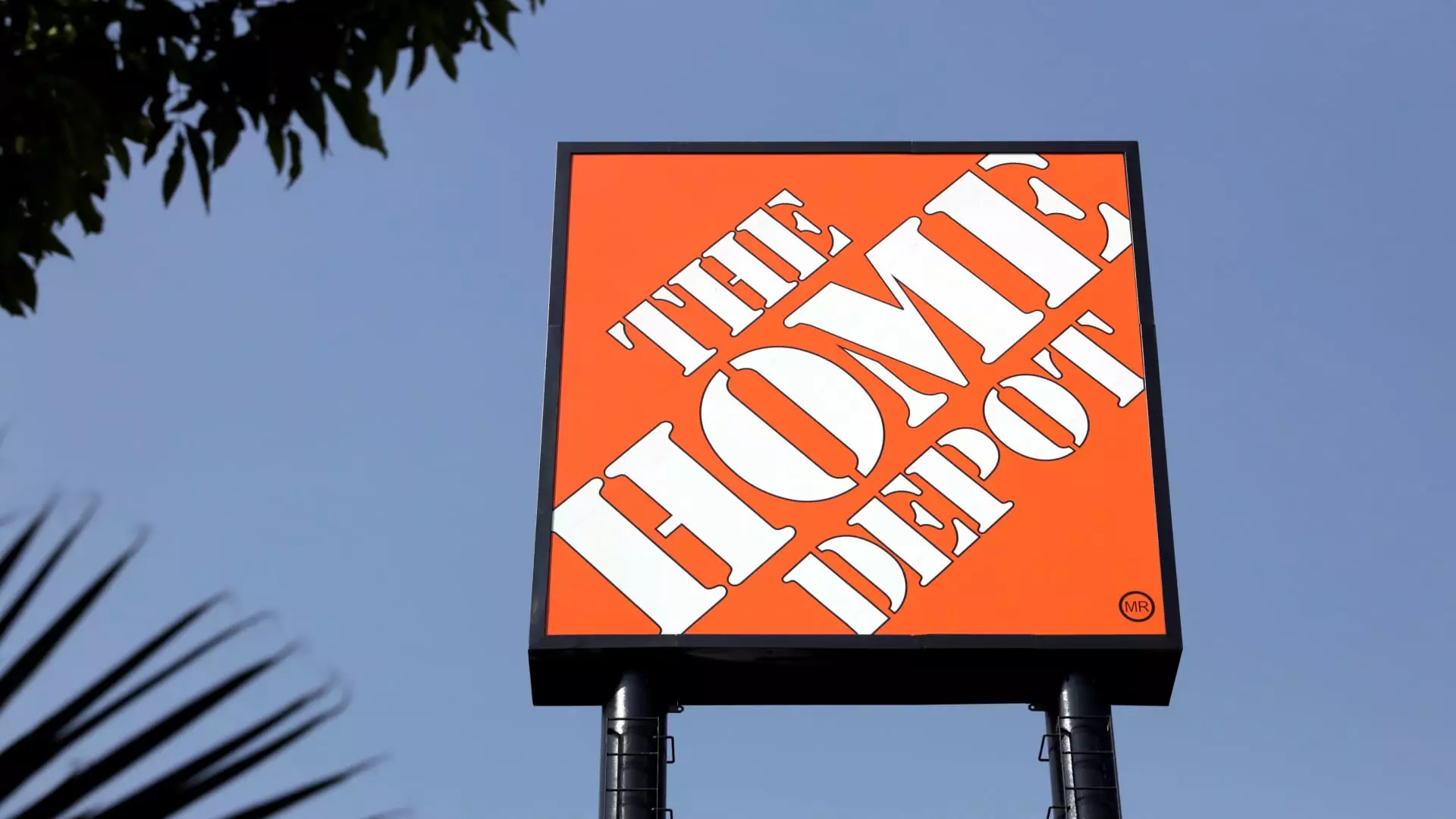In a recent announcement, Home Depot reported a notable increase in quarterly sales, rising more than 6% compared to the previous year. This growth was significantly bolstered by the acquisition of SRS Distribution, a strategic move aimed at expanding its reach in the professional market, covering sectors like roofing and landscaping. The latter half of the year has shown resilience amid challenging economic conditions, as demand for home improvement supplies surged, partly due to hurricane-related repairs and favorable weather across various regions.
The retailer’s revised full-year outlook now anticipates a sales increase of approximately 4%, a notable upgrade from earlier expectations of a 2.5% to 3.5% growth. Both projections factor in the impact of the SRS acquisition and an additional week in the fiscal year. SRS, having generated around $6.4 billion in sales, represents a significant boost to Home Depot’s overall sales strategy, catering primarily to professional clients.
Consumer Trends and Market Challenges
Despite these positive developments, Home Depot is not immune to the broader economic landscape, which continues to influence consumer behavior. Chief Financial Officer Richard McPhail highlighted a prevalent trend: consumers are increasingly postponing significant purchases while holding out for more favorable mortgage rates. The lingering effects of high inflation and elevated borrowing costs have contributed to a climate of uncertainty, leading to a careful approach toward spending.
The pent-up demand for home improvement projects remains palpable. Homeowners are eager to remodel and renovate, driven by changes in personal circumstances such as family growth or job relocations. However, many opt to wait for a more advantageous financing situation before committing to their projects. This cautious mindset underscores the delicate balance Home Depot must strike between capitalizing on existing demand while navigating consumer sentiment.
Financial Metrics and Market Response
Home Depot’s financial results for the third fiscal quarter paint a complex picture. The company reported a net income of $3.65 billion, or $3.67 per share, down from $3.81 billion in the same period last year. Revenue rose 6.6% to $40.22 billion, exceeding analysts’ expectations. However, comparable sales saw a slight decline of 1.3%, marking the eighth consecutive quarter of negative growth in this critical metric. Although this is an improvement on analyst predictions of a more considerable drop, it reflects the ongoing challenges within the broader retail environment.
Interestingly, despite these struggles, Home Depot’s stock has remained resilient, with a year-to-date increase of approximately 18%. This performance, while lagging behind the S&P 500’s 26% growth, denotes a level of investor confidence in the company’s strategic direction and ability to weather economic fluctuations.
Home Depot’s sales performance has also benefitted from favorable weather conditions, with an extended summer season encouraging consumers to invest in outdoor home improvement projects. Items such as grills, paints, and outdoor accessories saw increased sales, underpinned by consumer preparations for natural disasters. The impact of Hurricanes Helene and Milton further propelled sales, as customers purchased generators, batteries, and essential building materials for repairs.
As the holiday season approaches, Home Depot capitalizes on the surge in seasonal demand for decor and home improvement products. Unique offerings, like its viral 12-foot Halloween skeleton named Skelly, have resonated with consumers, further establishing the brand’s whimsical and festive reputation. Such strategies not only enhance product visibility but also strengthen customer loyalty.
Looking ahead, Home Depot faces a host of challenges and opportunities influenced by the fluctuating economic climate. The recent interest rate cuts by the Federal Reserve could signal a potential shift in consumer behavior, resurrecting housing turnover rates and spurring home improvement projects. Nevertheless, McPhail cautioned that predicting a turnaround remains complex, particularly given recent upticks in mortgage rates post-September.
Additionally, potential price pressures loom on the horizon, spurred by possible tariff implementations that could drive up supply costs for various goods, particularly those sourced from China. Home Depot has been proactive in diversifying its sourcing strategy, focusing on North America while closely monitoring changes to global supply chains.
Home Depot’s recent quarterly performance highlights both resilience and vulnerability in a changing economic landscape. By balancing strategic acquisitions with an acute awareness of consumer sentiment, the company is poised to navigate current and future market dynamics. As it adapts to shifting consumer needs and external forces, Home Depot remains a focal point for those observing the retail home improvement sector’s evolution.

